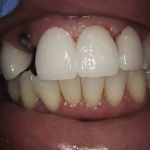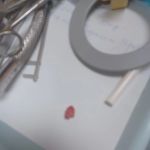
What Are the Signs of a Dental Infection? Early Symptoms You Shouldn't Ignore
- Common Signs of a Dental Infection
- Understanding the Symptoms of a Dental Infection
- How to Treat a Dental Infection
- When to See a Dentist About a Dental Infection
Common Signs of a Dental Infection
A dental infection can happen when bacteria enter the tissues surrounding your teeth. It may seem like a small issue at first, but if left untreated, it can lead to serious complications. So, how can you tell if you have a dental infection? Understanding the signs and symptoms is crucial for taking timely action.
1. Persistent Toothache
One of the most obvious signs of a dental infection is a persistent toothache. Unlike the occasional sensitivity that comes with eating hot or cold foods, a dental infection typically causes continuous, throbbing pain. This pain may worsen when you bite down or touch the affected area. If you experience this, it could be a sign of a tooth abscess or severe decay that needs immediate attention.
2. Swelling and Redness
Swelling in the gums or around the affected tooth is another common symptom of a dental infection. The area may appear redder than usual, and you might notice that the gums feel tender to the touch. In more severe cases, the swelling could extend to your face or jaw, indicating that the infection has spread. This is a serious sign that you should not ignore.
3. Bad Breath or Unpleasant Taste
An unpleasant taste in the mouth or foul-smelling breath can indicate that you have a dental infection. When bacteria grow in your teeth or gums, they produce toxins that can cause a bad odor. If brushing and flossing do not resolve the bad breath, it's important to see a dentist as it could be a sign of an infection.
4. Fever and General Discomfort
A fever often accompanies dental infections, especially if the infection has spread to other areas of your body. If you notice that you're running a fever along with pain, swelling, and redness, this is a serious indicator that you need to get medical attention as soon as possible.
5. Sensitivity to Hot or Cold
While some sensitivity to hot or cold can be normal, sudden and extreme sensitivity to temperature changes is another potential sign of a dental infection. If you find that a tooth becomes unbearably sensitive to hot drinks or cold foods, it could be due to an abscess or infection beneath the tooth's surface.
Understanding the Symptoms of a Dental Infection
Recognizing a dental infection early on can make all the difference between a quick recovery and more complex dental procedures. The symptoms can vary depending on the type and severity of the infection, but they generally involve localized pain and swelling, as well as systemic signs like fever. Below, we take a closer look at the different types of dental infections and their typical symptoms.
1. Tooth Abscess
A tooth abscess is a pocket of pus that forms around the root of an infected tooth. This type of infection is often caused by untreated cavities or gum disease. Symptoms include severe tooth pain, sensitivity, swelling in the gums, and the development of a pimple-like bump on the gum tissue. If not treated, the abscess can spread to other parts of the body.
2. Gum Infection (Periodontal Infection)
Gum infections, also known as periodontal infections, typically occur due to poor oral hygiene or untreated gingivitis. These infections can cause gum swelling, bleeding, tenderness, and even tooth mobility. Left untreated, they may lead to tooth loss or more serious health complications.
3. Sinus Infection Due to Tooth Infection
Sometimes, a tooth infection can cause a sinus infection, especially when the upper teeth are affected. This can lead to symptoms like pressure in the face, sinus pain, and a stuffy nose, along with the typical dental infection signs. A tooth infection affecting your sinuses requires immediate treatment from a dentist.
How to Treat a Dental Infection
If you suspect that you have a dental infection, it's crucial to take action as soon as possible to prevent the infection from spreading or worsening. Treatment usually involves both home remedies and professional dental care. Here’s what to do if you notice the signs of a dental infection:
1. Antibiotics
If your dentist diagnoses you with a dental infection, they may prescribe antibiotics to help control the infection. Antibiotics will help reduce the swelling and eliminate the bacteria causing the infection. However, antibiotics alone cannot treat the infection completely—you will still need a dental procedure to address the underlying issue.
2. Root Canal Treatment
If the infection has spread to the root of the tooth, a root canal may be necessary to remove the infected tissue and save the tooth. A root canal procedure can help eliminate the infection and prevent it from spreading further. Afterward, your dentist will likely place a crown on the tooth to protect it.
3. Tooth Extraction
In some cases, if the tooth is too damaged or decayed to be saved, tooth extraction may be necessary. This will remove the infected tooth and prevent the infection from spreading to other parts of your mouth. After the extraction, your dentist will discuss options for tooth replacement, such as dental implants or bridges.
When to See a Dentist About a Dental Infection
If you notice any of the signs of a dental infection, it’s important to see a dentist as soon as possible. The sooner you seek treatment, the easier it will be to address the issue and prevent further complications. If you experience severe pain, swelling, fever, or difficulty breathing or swallowing, seek emergency dental care immediately.
Early intervention is key to managing dental infections effectively. To get more information on how to recognize and treat dental infections, or to schedule an appointment, visit Dentistry Toothtruth for expert advice and care.







 Society Hill Dental4.0 (145 review)
Society Hill Dental4.0 (145 review) Paul E. Webb, DDS5.0 (11 review)
Paul E. Webb, DDS5.0 (11 review) The Orthodontists at Council Bluffs0.0 (0 review)
The Orthodontists at Council Bluffs0.0 (0 review) Smile Dental of New Rochelle5.0 (242 review)
Smile Dental of New Rochelle5.0 (242 review) Dental Dreams-Cermak4.0 (284 review)
Dental Dreams-Cermak4.0 (284 review) Edward Kim DMD4.0 (16 review)
Edward Kim DMD4.0 (16 review) The Importance of Oral Health Education During Pregnancy for a Healthy Pregnancy
The Importance of Oral Health Education During Pregnancy for a Healthy Pregnancy Best Tips for Brushing Your Teeth Properly for Healthy Gums: Essential Techniques for Oral Health
Best Tips for Brushing Your Teeth Properly for Healthy Gums: Essential Techniques for Oral Health Why Skipping Dental Checkups Can Lead to Bigger Oral Health Problems
Why Skipping Dental Checkups Can Lead to Bigger Oral Health Problems Advantages of Porcelain Dental Restorations
Advantages of Porcelain Dental Restorations How Can Diabetes Cause Tooth and Gum Problems? Preventing and Managing Oral Health Issues
How Can Diabetes Cause Tooth and Gum Problems? Preventing and Managing Oral Health Issues Healthy Habits for Promoting Good Oral Health and Hygiene: Tips for a Healthy Smile
Healthy Habits for Promoting Good Oral Health and Hygiene: Tips for a Healthy Smile